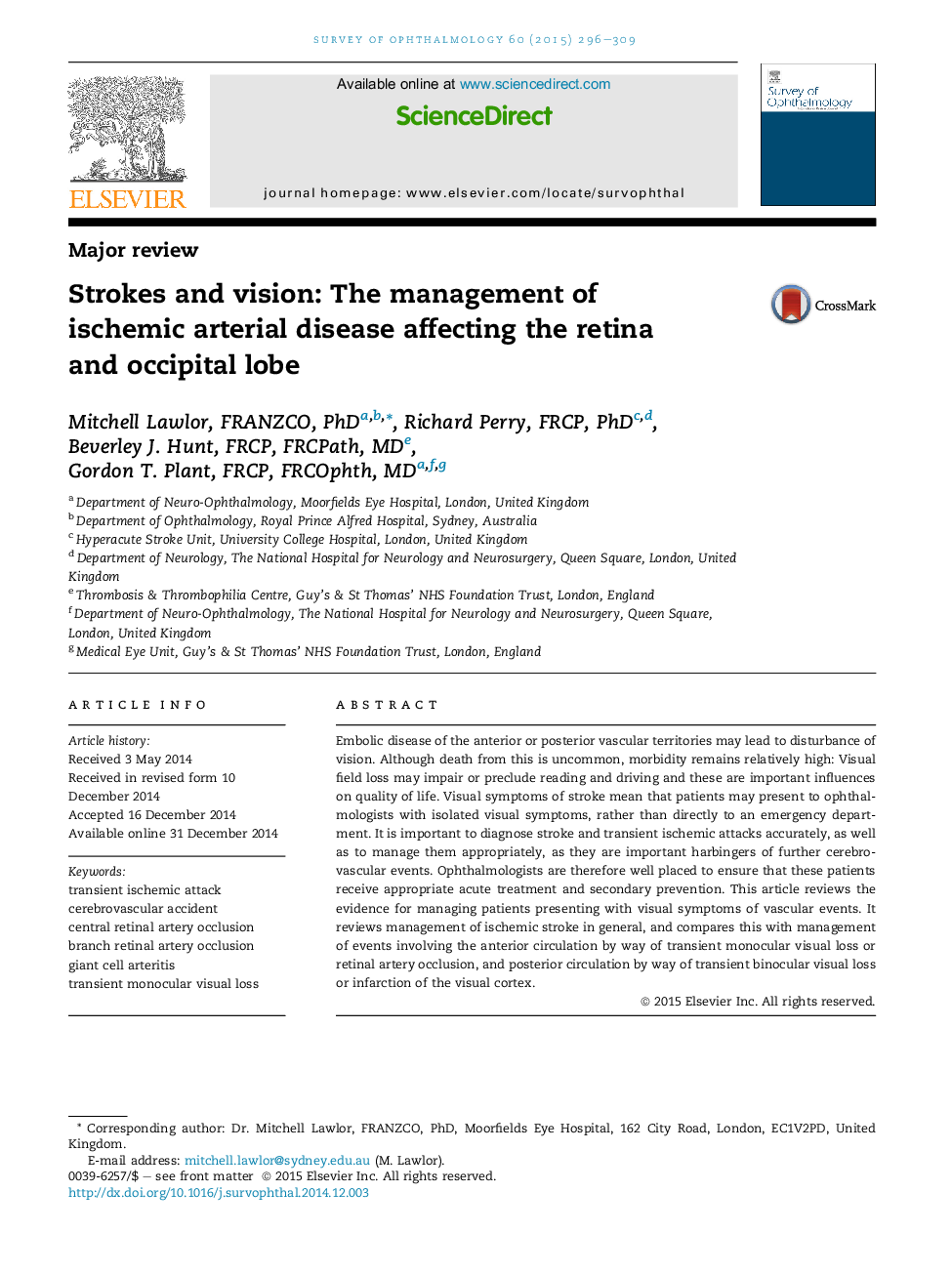| Article ID | Journal | Published Year | Pages | File Type |
|---|---|---|---|---|
| 6202826 | Survey of Ophthalmology | 2015 | 14 Pages |
Embolic disease of the anterior or posterior vascular territories may lead to disturbance of vision. Although death from this is uncommon, morbidity remains relatively high: Visual field loss may impair or preclude reading and driving and these are important influences on quality of life. Visual symptoms of stroke mean that patients may present to ophthalmologists with isolated visual symptoms, rather than directly to an emergency department. It is important to diagnose stroke and transient ischemic attacks accurately, as well as to manage them appropriately, as they are important harbingers of further cerebrovascular events. Ophthalmologists are therefore well placed to ensure that these patients receive appropriate acute treatment and secondary prevention. This article reviews the evidence for managing patients presenting with visual symptoms of vascular events. It reviews management of ischemic stroke in general, and compares this with management of events involving the anterior circulation by way of transient monocular visual loss or retinal artery occlusion, and posterior circulation by way of transient binocular visual loss or infarction of the visual cortex.
